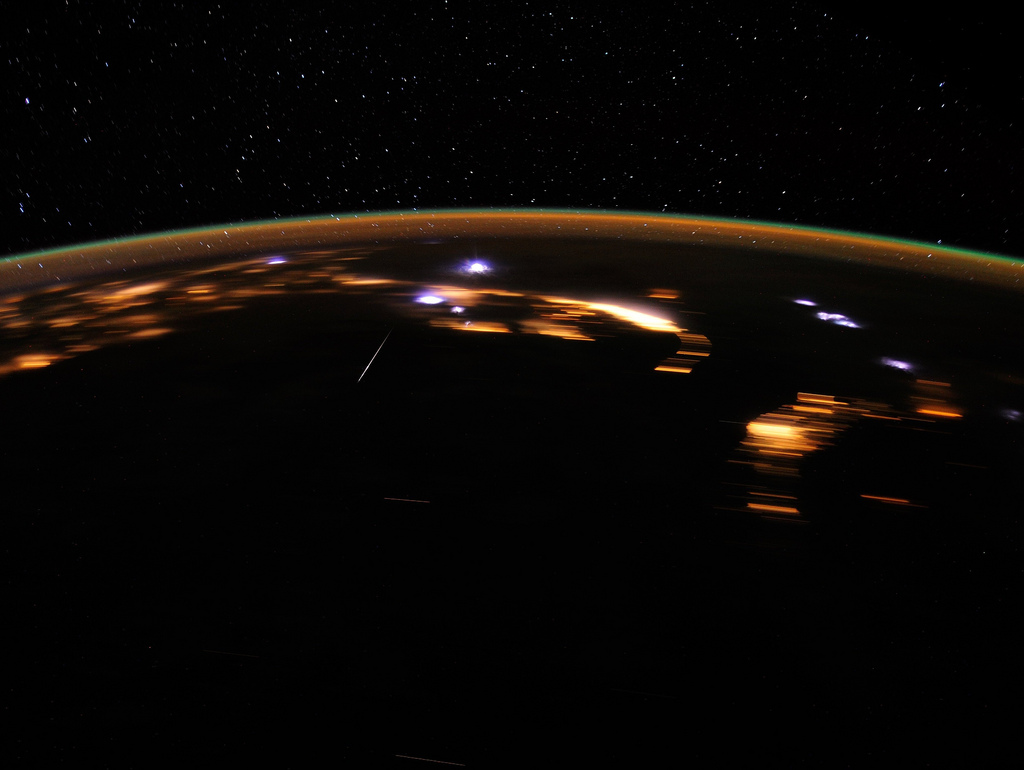Watch the Sky Fall Before the World 'Ends' on Monday

Take a minute to look up at the stars this weekend, because two very, very special things are supposedly happening there. One is the annual observance of one of Earth's oldest-known meteor showers. The other is the apocalypse.
From late Saturday (April 21) to early Sunday (April 22), stargazers in the Northern Hemisphere have a chance to be dazzled by the Lyrid meteor shower, which has reliably lit up the sky with shooting stars every April for nearly 3,000 years. The shower will peak after the moon sets early Sunday morning. Look into the sky around 2 a.m. local time on Sunday, and you can expect to see about 15 to 20 meteors each hour.
Keep watching, because sometime on Monday (April 23), another cosmic display is scheduled to grace the heavens — and this one you definitely won't want to miss. According to professional doomsayer David Meade, that's when a rogue planet called Nibiru (or "Planet X") will crash into our solar system, ushering in an apocalyptic end of days as described in the Biblical "Book of Revelation."
(To be clear, Nibiru's appearance in the sky on Monday will be only a harbinger of the end, Meade told the tabloid Express; the actual destruction of the world won't occur until October, when Nibiru passes by Earth and causes most of the world's volcanoes to erupt simultaneously.)
Live Science doesn't want to tell you how to live your life, but if you have only enough time to watch one phenomenon in the sky this weekend, the Lyrids are definitely the safer bet. The annual meteor shower has occurred every April since at least 687 B.C., when Chinese astronomers remarked that they could see meteors "falling like rain."
Earth sees the Lyrids so reliably this time of year because that's when our planet passes through the dusty debris left behind by Comet Thatcher, which whizzes through our solar system once every 400 years. Thatcher was last observed in 1861 so, sadly, none of us will be around to see its next flyby in the 2200s — that is, if the world doesn't end first.
Nibiru, on the other hand, has been labeled a hoax by NASA, and there's not a shred of evidence for the planet's existence. Why does Meade think April 23 will nevertheless herald the rogue planet's arrival? Meade said that on that date, the sun, moon and Jupiter will align in the constellation of Virgo, echoing a passage in Revelation that refers to a "woman clothed with the sun, with the moon under her feet and a crown of 12 stars on her head" who will bring about a child that ends the world.
Sign up for the Live Science daily newsletter now
Get the world’s most fascinating discoveries delivered straight to your inbox.
As Live Science previously reported, Meade used this same passage to explain that the world would end on Sept. 23, 2017 (which, researchers agree, it did not). If that history doesn't console you, consider that Jupiter will not even be aligned in Virgo on April 23. From Earth, the gas giant will actually appear to be in Libra.
Have fun watching the sky fall this weekend, however you choose to interpret that.
Originally published on Live Science.

Brandon is the space/physics editor at Live Science. His writing has appeared in The Washington Post, Reader's Digest, CBS.com, the Richard Dawkins Foundation website and other outlets. He holds a bachelor's degree in creative writing from the University of Arizona, with minors in journalism and media arts. He enjoys writing most about space, geoscience and the mysteries of the universe.









